Students Reimagine Downtown Arlington with Form-Based Code Proposals
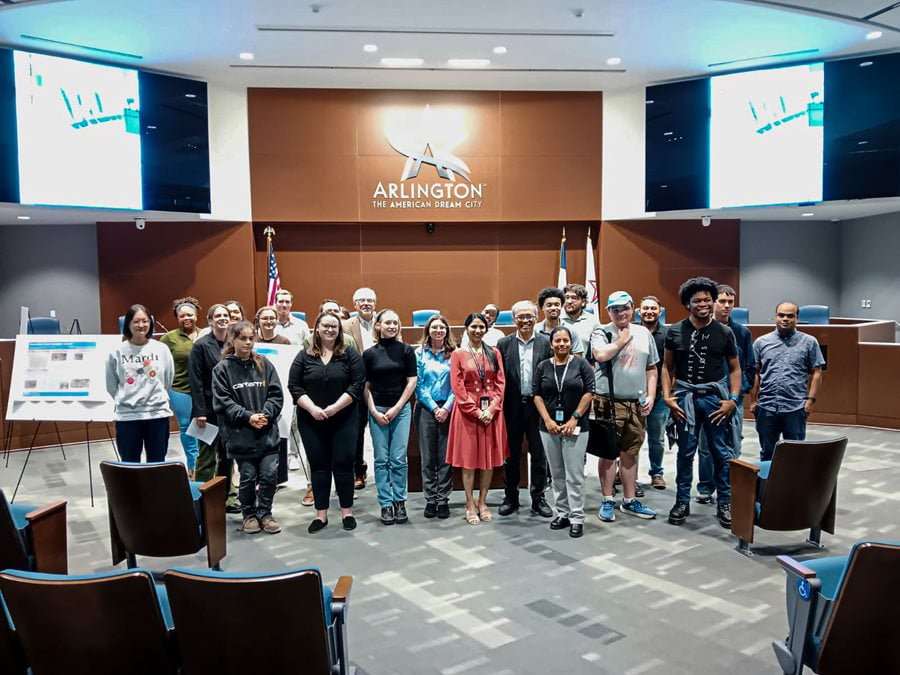
The next generation of urban planners is bringing a new vision to the heart of Arlington. Students from the University of Texas at Arlington's PLAN 5308 course, Metropolitan Sustainability and Plan Making, instructed by Dr. Deden Rukmana, presented innovative Form-Based Code (FBC) proposals to transform Downtown Arlington's key corridors into vibrant, walkable, and sustainable urban spaces.
Form-based code (FBC) is a modern land regulation tool that prioritizes the physical form of the built environment over traditional land uses like residential or commercial. FBC encourages mixed-use development, pedestrian activity, and a sense of place by focusing on the look and feel of a streetscape rather than strictly segregating land uses. Thanks to their cohesive design and welcoming atmosphere, visitors often feel more comfortable walking through the FBC streetscape (source: https://www.arlingtonlistens.com/form-based-code-development).
In alignment with this approach, the City of Arlington is piloting a Form-Based Code district to help realize its long-term vision of becoming a more livable, connected, and thriving community. If successful, the model could expand to other neighborhoods throughout the city, supporting Arlington's ambition to be "The American Dream City."
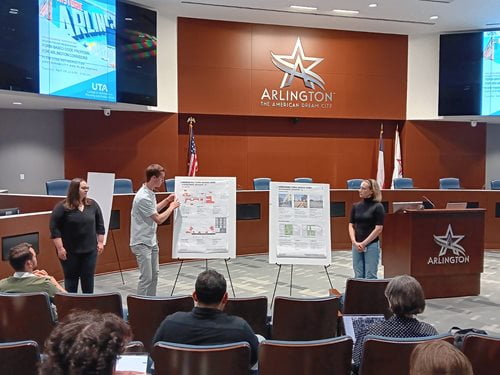
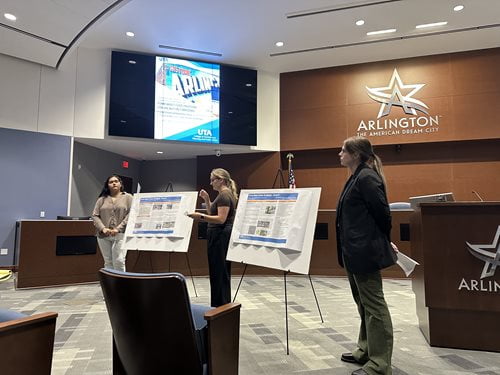
One of the student-led proposals comes from Reagan Smith and her team, who proposed revitalizing a surface parking lot along Spaniolo Drive near the University of Texas at Arlington (UTA). Their core idea? Turn a parking lot space into a dynamic hub for students and the larger downtown community.
"We wanted to create a more vibrant, inclusive, and sustainable urban environment by integrating green spaces, adaptable structures, and areas that invite collaboration and community gathering," said Smith.
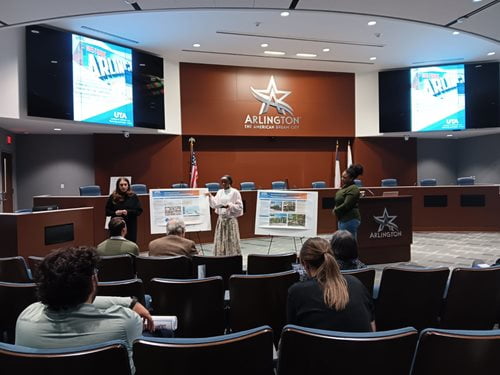
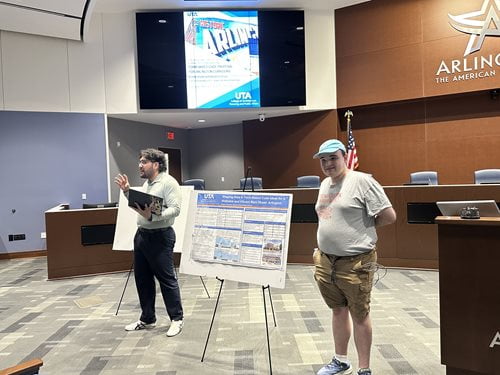
Designing for both functionality and community posedposes challenges. "It was tough to figure out how much ground to cover and what would make sense programmatically," Smith explained. "Should it primarily serve UTA students or be more inclusive of the broader Downtown community? We had to strike a careful balance."
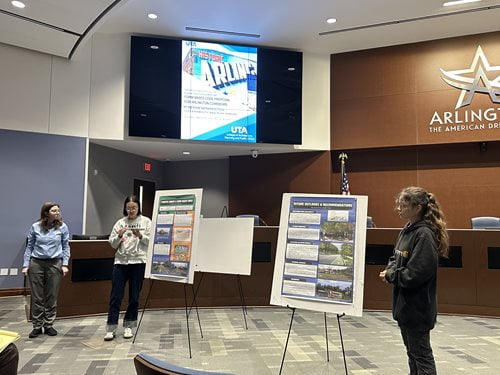
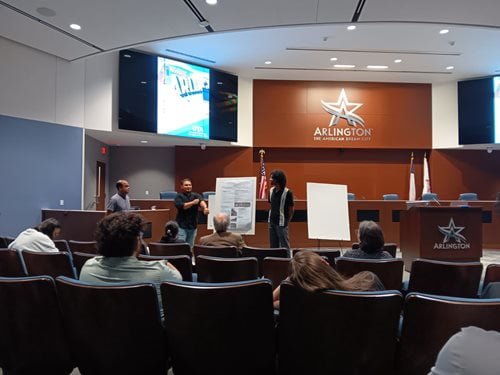
Reagan and her team saw a chance to unite people and make Downtown Arlington corridors more meaningful. Therefore, they specifically focused on a frequently traveled yet underutilized stretch of Spaniolo Drive. Currently a surface parking lot, the area is poised for a dramatic transformation under their Form-Based Code proposal.
"Our proposal creates a more interactive and people-oriented experience," said Smith. "This part of Spaniolo sees a lot of foot traffic from students, but right now, it is just a pass-through. We wanted to design something encouraging people to rest, study, collaborate, or hang out in the shade."

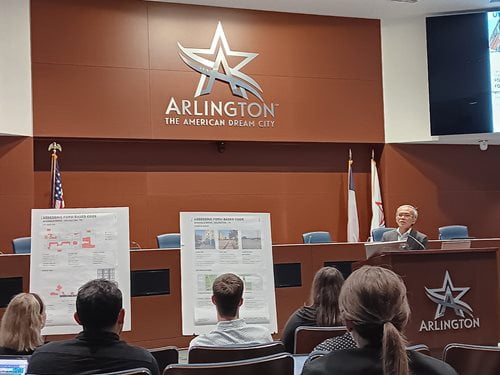
Another standout project came from Nosa Omorotionmwan and his team, who focused on Area 6—an area near North Oak Street and West North Street, mainly characterized by single-family homes. Unlike other groups participating in the project, Nosa's team faced the unique challenge of applying Form-Based Code principles within a well-composed residential neighborhood.
"The main idea behind our project was extending the existence of form-based code in Downtown Arlington," Nosa explained. "We had to ensure we would not speak over people currently living in the area." Their solution was collaborating closely with Mount Olive Baptist Church (MOBC), which owns several nearby properties and serves as a community anchor.
This partnership became central to the outreach and engagement strategy. Using MOBC as a focal point, the team could raise awareness and foster community participation.
The group's three main goals were to:
- Increase walkability – by redeveloping the public realm to include safe and accessible sidewalks.
- Create a communal space – proposing a pocket garden on adjoining church-owned properties to foster neighborhood interaction.
- Strengthen connectivity – link this neighborhood with other parts of Arlington already governed by the Form-Based Code.
"Sidewalks are not a revolutionary idea," Nosa noted, "but they make it safer for ALL pedestrians and can serve as a yellow brick road toward daily necessities—groceries, libraries, schools, or just fun spots around town."
By shifting the focus from cars to people, these proposals illustrate the potential of Form-Based Code to turn overlooked corners of the city into destinations in their own right—places that inspire interaction, creativity, and community. The vision is about urban design and fostering a deeper sense of place and belonging.
Key listener Tharani Devi Palma, Principal Planner of the City of Arlington, sees tremendous potential in FBC's adaptability. "In places like downtowns and destination-style neighborhoods, these students' proposals help preserve character while allowing for a natural mix of uses that complement each other. That's powerful for shaping the future of Downtown Arlington."
FBC districts also offer practical benefits: by encouraging development that blends residential, retail, office, and dining options, they reduce the need for driving and boost foot traffic for local businesses. Buildings are designed for flexibility, allowing uses to evolve with the market and community needs.
As the city watches these student proposals take shape, there is optimism the ideas emerging from PLAN 5308 could serve as a blueprint for Arlington's transformation and how cities nationwide can reimagine underutilized space for a more sustainable and connected future.